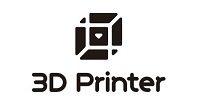Introduction
3D printing has revolutionized the manufacturing industry, allowing for the creation of complex and customized objects. One of the key factors that contribute to the success of 3D printing is the wide range of materials that can be used. In this article, we will explore the basics of materials used in 3D printing and delve into some advanced options.
PLA (Polylactic Acid)
PLA is one of the most commonly used materials in 3D printing. It is a biodegradable thermoplastic derived from renewable resources such as cornstarch or sugarcane. PLA is easy to print with and offers good strength and surface finish. However, it has a relatively low melting point, limiting its use in high-temperature applications.
ABS (Acrylonitrile Butadiene Styrene)
ABS is another popular material in 3D printing. It is a petroleum-based thermoplastic known for its durability and impact resistance. ABS has a higher melting point compared to PLA, making it suitable for functional parts. However, it requires a heated print bed to prevent warping during the printing process.
PETG (Polyethylene Terephthalate Glycol)
PETG is a versatile material that combines the best properties of PLA and ABS. It offers good strength, flexibility, and impact resistance. PETG is also transparent, making it suitable for applications that require clarity. It has a higher melting point than PLA but lower than ABS, making it easier to print with.
Nylon
Nylon is a strong and flexible material widely used in various industries. It offers excellent mechanical properties, including high tensile strength and impact resistance. Nylon is suitable for functional prototypes, tooling, and end-use parts. However, it requires specific printing conditions, such as a heated chamber, to prevent warping.
TPU (Thermoplastic Polyurethane)
TPU is a flexible filament known for its rubber-like properties. It is highly elastic, resistant to abrasion, and can withstand extreme temperatures.
Summary
This blog post will delve into the fascinating world of materials used in 3D printing, starting from the basics and progressing to more advanced options. We will explore the characteristics and properties of various materials commonly used in 3D printing, such as PLA, ABS, nylon, resin, and even metals like titanium and stainless steel.
Understanding the strengths and limitations of different materials is crucial for achieving desired outcomes in 3D printing projects. We will discuss the factors to consider when selecting a material, including mechanical properties, heat resistance, flexibility, and aesthetic qualities.
Moreover, we will explore the latest advancements in 3D printing materials, such as composite materials, conductive filaments, and biodegradable options. These cutting-edge materials open up new possibilities for creating functional prototypes, intricate designs, and even medical implants.
Whether you are a beginner in the world of 3D printing or an experienced enthusiast, this blog post wi view ll provide valuable insights into the diverse range of materials available and help you make informed decisions for your next 3D printing project.
- Q: What is 3D printing?
- A: 3D printing, also known as additive manufacturing, is a process of creating three-dimensional objects by layering materials based on a digital model.
- Q: What are the basic materials used in 3D printing?
- A: The basic materials used in 3D printing include thermoplastics, such as ABS and PLA, as well as metals, ceramics, and composites.
- Q: What is ABS?
- A: ABS (Acrylonitrile Butadiene Styrene) is a common thermoplastic used in 3D printing due to its strength, flexibility, and impact resistance.
- Q: What is PLA?
- A: PLA (Polylactic Acid) is another popular thermoplastic used in 3D printing. It is derived from renewable resources and offers biodegradability.
- Q: Can metals be used in 3D printing?
- A: Yes, metals like titanium, aluminum, stainless steel, and even precious metals can be used in 3D printing through processes like selective laser melting (SLM) or electron beam melting (EBM).
- Q: What are the advanced materials used in 3D printing?
- A: Advanced materials used in 3D printing include carbon fiber-reinforced polymers, conductive filaments, bioinks for bioprinting, and high-performance metals like Inconel and titanium alloys.
- Q: What are the advantages of 3D printing?
- A: Some advantages of 3D printing include rapid prototyping, customization, reduced material waste, complex geometries, and the ability to create intricate designs.
- Q: Are there any limitations to 3D printing?
- A: Yes, some limitations of 3D printing include limited material options, slower production speed compared to traditional manufacturing methods, and the need for post-processing in certain cases.
- Q: Can 3D-printed objects be functional?
- A: Yes,

Welcome to my website! My name is Noah Embry, and I am a passionate Dental Public Health Specialist with a strong interest in prototyping essentials, 3D printing techniques, design software reviews, and custom fabrication tips. I am thrilled to share my knowledge and expertise in these areas with you.
